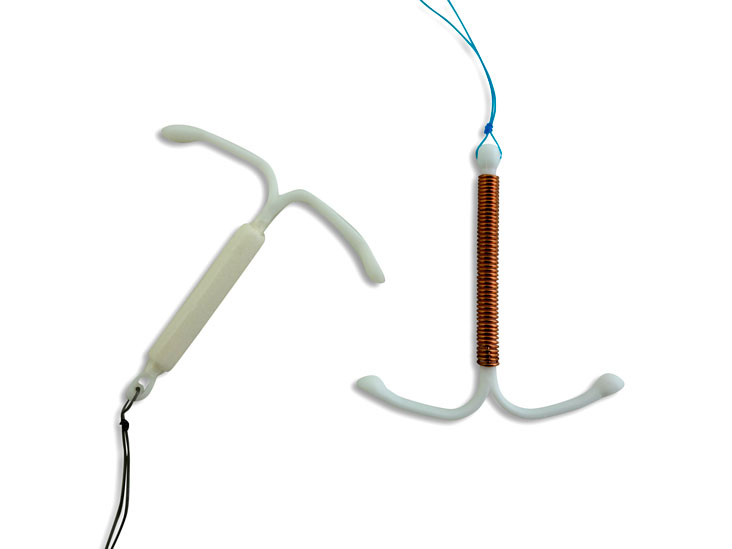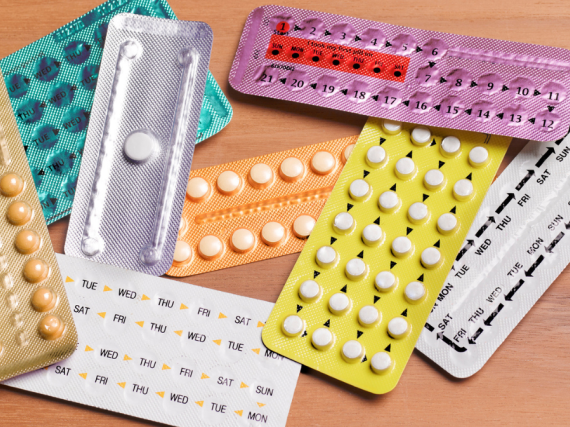IUD (Intrauterine Device)

The intrauterine device (IUD) is a small, T-shaped piece of plastic that you can have a health care provider put inside your uterus. The IUD makes it harder for sperm to move efficiently, preventing it from fertilizing an egg. In the U.S., there are five brands of IUDs available: Kyleena, LILETTA, Mirena, Paragard, and Skyla.
IUDs can offer years of protection from pregnancy. How long they last depends on the type you get. Some last for up to three years and others last for up to 12 years. If you want to get pregnant or simply want to switch to a different method of birth control at any time, you can have the IUD removed. And if you have plans to get pregnant in the future, don’t worry—having an IUD now doesn’t affect your fertility in the future.
While the IUD is safe and super effective at preventing pregnancy, it doesn’t offer protection against sexually transmitted infections (STIs). For STI protection, you can use condoms, internal condoms, dental dams, gloves, and/or PrEP (pre-exposure prophylaxis, which lowers the risk of getting HIV from sex).
Three types of IUDs (LILETTA, Mirena, and Paragard) can also be used as emergency contraception if you get them within five days of having unprotected sex. These three types of IUDs are the most effective methods of emergency contraception, preventing pregnancy in over 99% of cases.
Types of IUDs
The hormonal IUD is a small, T-shaped piece of plastic that a health care provider can insert into your uterus to prevent pregnancy. There are four hormonal IUDs available in the U.S.—Kyleena, LILETTA, Mirena, and Skyla. All four hormonal IUDs are more than 99% effective at preventing pregnancy. All four release a small amount of progestin, which is the synthetic version of progesterone, a hormone made by the body. Progestin prevents pregnancy mainly by thickening cervical mucus to keep sperm from reaching the uterus. Hormonal IUDs can last between three and eight years, depending on which one you get. They may cause some changes to your periods, usually making them lighter, shorter or irregular, or stopping them altogether.
Two of the hormonal IUDs, Mirena and LILETTA, can also be used as emergency contraception. The risk of pregnancy decreases by over 99% when a health care provider inserts one of these IUDs up to five days after unprotected sex.
None of the types of IUDs protect against STIs.
The non-hormonal IUD, known by the brand name Paragard in the United States, is a small, T-shaped piece of plastic wrapped in copper wire. The non-hormonal IUD works by interfering with the way sperm moves and reducing its ability to fertilize eggs, and possibly also by preventing the implantation of fertilized eggs in the uterus.
Paragard lasts up to 12 years, which is longer than any other IUD and is one of the longest-lasting of any of the birth control methods. It’s also one of the most effective methods of preventing pregnancy. It’s over 99% effective at preventing pregnancy. However, copper IUDs don’t protect against STIs—no IUDs do.
The non-hormonal IUD is also one of the most effective forms of emergency contraception, along with Mirena and LILETTA, which are IUDs that contain hormones. The non-hormonal IUD can be inserted up to five days after unprotected sex to reduce the risk of pregnancy by over 99%.
Details
Costs
How to Use It
If you want to get an IUD, the first thing you'll need to do is talk with your health care provider. They will ask you a bunch of questions about your medical history and your lifestyle, then give you an exam to make sure the IUD is right for you.
You can get the IUD inserted any time of the month. Some providers like to insert it during your period, but any time is fine as long as you can be sure you're not pregnant. It may be the most comfortable to get it done during the middle of your period, if you can believe that. (That's when your cervix—the opening to your uterus—is open the most.) It's pretty common to feel some cramps when you get an IUD inserted, but they'll go away with rest or pain medication. Some people might feel dizzy, too. Once the IUD is in, you'll notice a little string that hangs down into your vagina. That's there so that the IUD can be removed later. (The strings don't hang out of the vagina like a tampon, though.) After it's in, there's really not much you have to do other than check the string ends from time to time to make sure it's in place. Here's how: 1. Wash your hands, then sit or squat down. 2. Put your finger in your vagina until you touch your cervix, which will feel firm and rubbery like the tip of your nose. 3. Feel for the strings. If you find them, congrats! Your IUD is good to go. But if you feel the hard part of the IUD against your cervix, you may need to have it adjusted or replaced by your provider.p.s. Don't tug on the strings! If you do, the IUD could move out of place.
p.p.s. If you don't feel comfortable checking for the strings, you can let your provider do that the month after insertion, and then yearly after that.
Side Effects
There are positive and negative things to say about each and every method. And everyone's different—so what you experience may not be the same as what your friend experiences.

